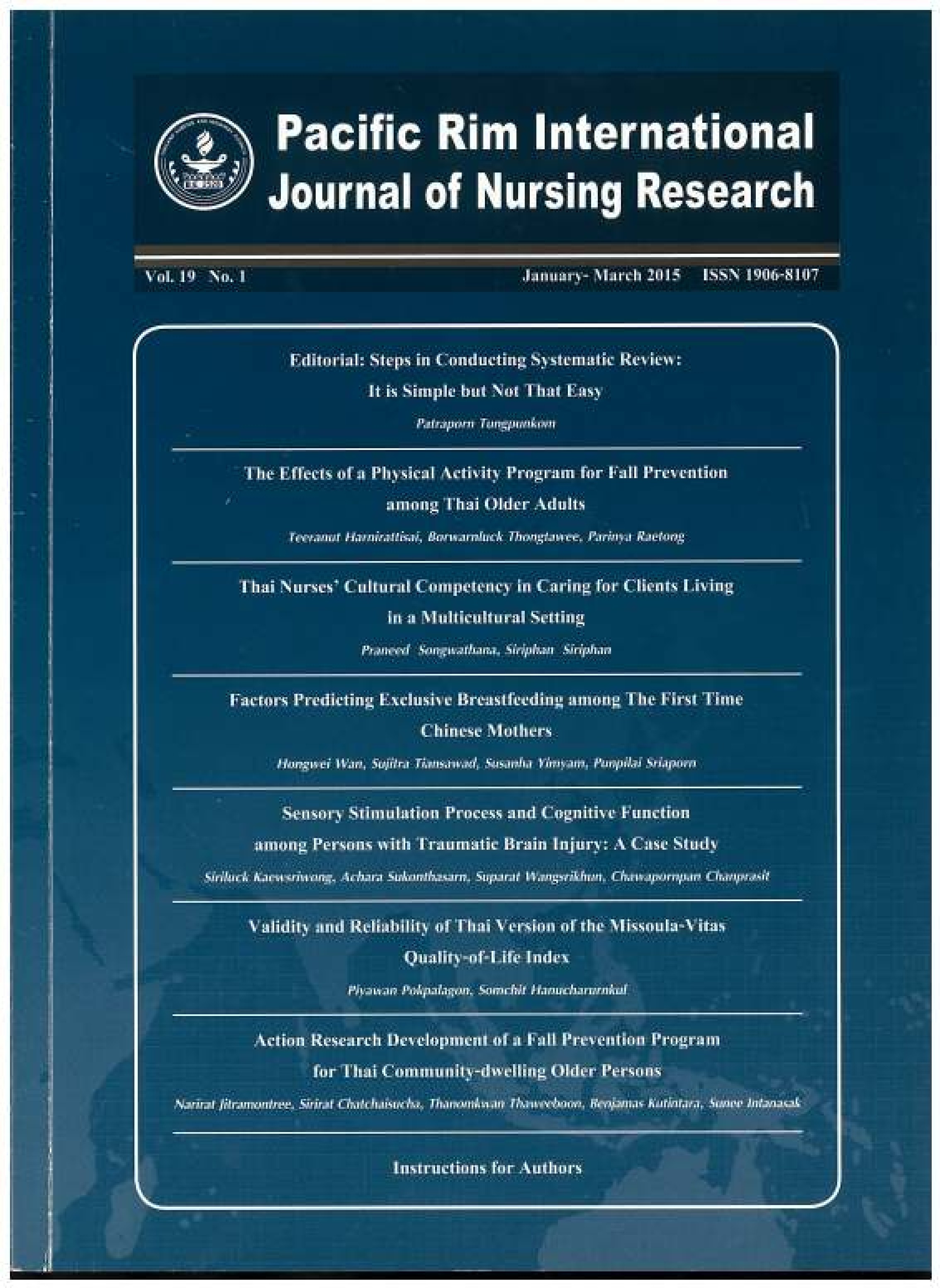Action Research Development of a Fall Prevention Program for Thai Community-dwelling Older Persons
Keywords:
community-dwelling older persons, fall, fall prevention, participatory action research, Thai older personsAbstract
Preventing falls in community-dwelling older people is a key public health priority. This action research developed the Multifactorial, Age-friendly Fall Prevention Program in collaboration with community participants and based on their needs and desires to prevent falls in older people. The study process was based on Lewin’s concept of rational social management and included three phases: planning, action, and results from working with 80 participants comprising 50 older persons, 20 family members, six public health nurses, a community leader, and three public health volunteers. Planning included the steps of fall risk assessment, increased awareness, and brain storming for action. Action included implementation of the action plan designed around learning processes in collaboration with the community stakeholders, and the immediate evaluation. Lastly, results were the fall prevention behavioral changes, and measurement of output.The Thai Fall Risk Assessment Test was used at the planning step. Focus group discussion and in-depth interview were used to collect qualitative data which were analyzed by content analysis. Findings reported here are the initial development process of the program and the lessons learned from the study. The program focused on the older participants’ preferences, and included intrinsic and extrinsic risk factors and is a multi-factorial intervention. It included fall risk assessment, fall education, exercise and cane use training, handing out a fall prevention handbook, home safety assessment, home visits, and giving reminders. Themes arising were improved communication about falls, mutual learning, and motivation through reminder calls. The limitations include the generalizability of findings in different contexts. Nurses should always consider including community participation in developing fall prevention programs so as to get more holistic understanding and support in helping older people.
Downloads
Published
How to Cite
Issue
Section
License
Copyright: The Pacific Rim International Journal of Nursing Research, Thailand Nursing & Midwifery Council has exclusive rights to publish, reproduce and distribute the manuscript and all contents therein.








.png)



